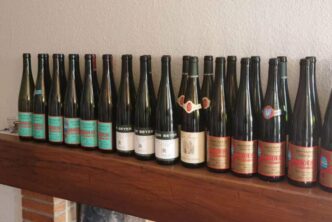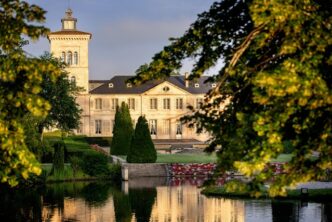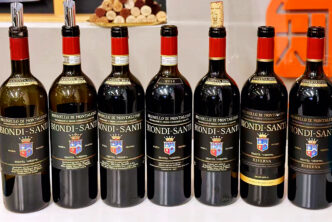The Mauro Molino represents well what is so thrilling about Barolo, that being a bevy of highly skilled, passionate winemaking families that make one great wine after another. In other words, in Barolo you do not need to always run after the more famous producers or seek out the most expensive bottles to drink well. In this neck of the Italian woods, there’s just an embarrassment of liquid Nebbiolo goodies. (See also the Mauro Molino Barolo Conca vertical, published in the TerroirSense Wine Review in May 2022.)
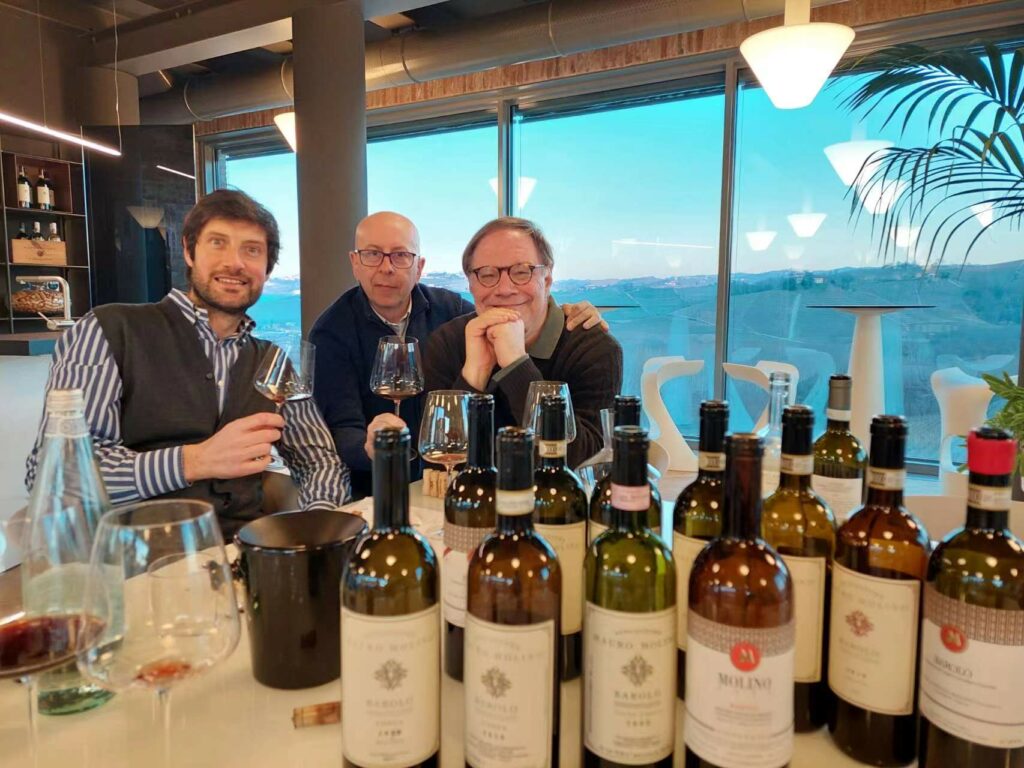
Mauro Molino moved back to Piedmont in 1979 when his father Giuseppe passed away. He inherited the family vineyards, and this prompted him to begin replanting the old vineyards and to build his winery in the Annunziata fraction of La Morra. Molino made his first Barolo in 1982, using grapes from what is one of La Morra’s, and of all Barolo in fact, best crus: the Conca vineyard of the Annunziata. Today the Mauro Molino estate owns twenty-two hectares (twenty under vine) and makes Barolos from different crus; the estate is now mostly run by Mauro’s two children, the sibling duo of Matteo and Martina Molino.
The Conca Vineyard has long been famous as a prime site for Nebbiolo, and once used to belong to the Abbazia di Marcenasco (abbey of Marcenasco) and was therefore often called Conca dell’Annunziata (to distinguish it from the even more famous Rocche dell’Annunziata cru). Make no mistake about it: if we were to use a Burgundian classification system, Conca would be classified a grand cru. It’s actually one of Barolo’s five smallest vineyard districts/MGAs, and as its name implies, it is a small south-facing bowl-shaped patch of very sunlit vines. Conca, a warm site, tends to give Barolos that sultry, spicy and fleshy, but that always express great elegance. This is what makes the site a grand cru: the wines aren’t just big and chewy (by La Morra standards) but refined and light on their feet, despite all their opulence and relative power. Conca boasts a complex geology, and this is articulated in its wines, that are just as fascinating and complex (for more in-depth information on this, I refer you to my recently published book, co-written with my good friend and Italian wine expert Michele Longo: Barolo Terroir Grapes, Crus, People, Places.
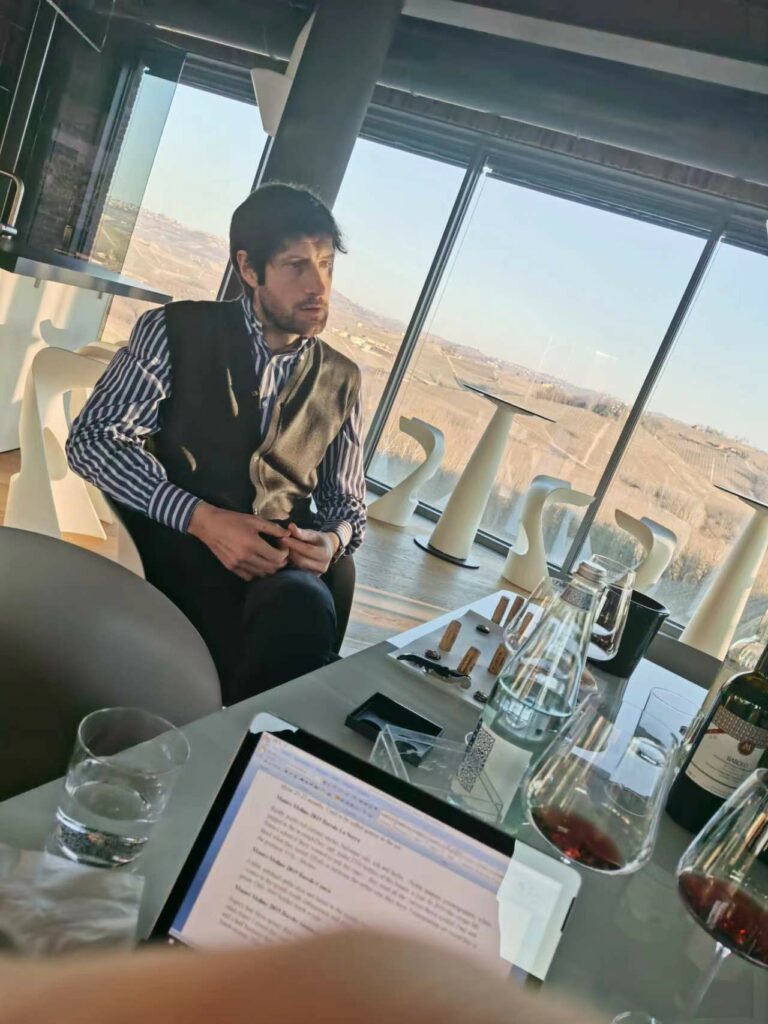
Mauro Molino’s Barolo Conca is made from 0.45 hectares of south/southeast-facing vines planted at 250 meters above sea level, and about 10% of the Nebbiolo planted there is actually Nebbiolo Rosé, the presence of which makes for a highly perfumed, sexy-sultry Barolo indeed. The winemaking sees about ten days of maceration on the skins, then alcoholic fermentation in stainless steel tanks for about twenty days, and aging of twenty-four months in lightly toasted (or even untoasted) Allier forest French oak barriques (of which about 10% are new), and hasn’t changed much over the years (give or take a few tweaks).
The wines in this tasting
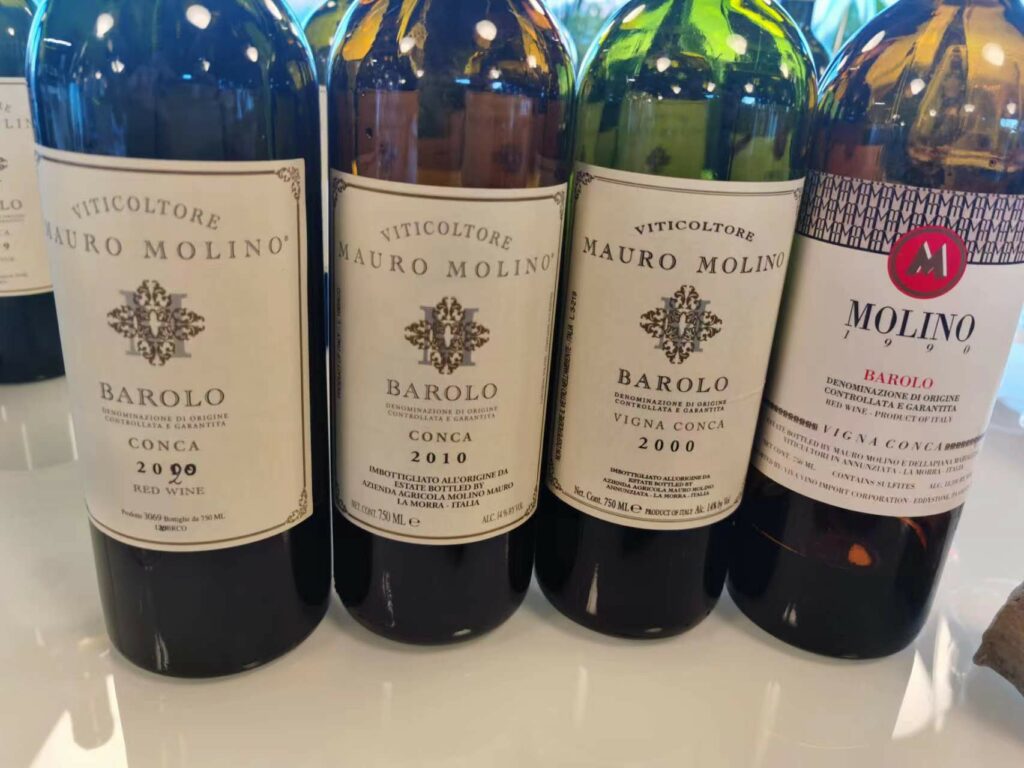
Mauro Molino 2020 Barolo Conca 95+
This is very Conca: bright red in colour, it boasts a beautifully enticing aroma set reminiscent of red roses, ripe red cherry, cinnamon and violet. Then enters fat and broad, with sweet spice and fleshy fruit red fruit flavours similar to the aromas. Long and sauve on the risingly tannic but noble finish. This ought to turn out to be a knockout, and I think it will be getting even higher scores everywhere in a few years time. Drinking window: 2030-2048.
Mauro Molino 2010 Barolo Conca 96
Medium red with a hint of a pale rim. Inviting aromas of superripe red cherry, sweet spices, violet pastille and tobacco: very Nebbiolo Rosé! Sultry, sexy and rich in the mouth, with layered flavours of cinnamon, nutmeg, glossy red cherry, raspberry nectar, kirsch and balsamic oils. Very well balanced and with a hint of menthol emerging on the long, suave and nobly tannic back end. This is beautiful, an expression of La Mortra Barolo of spectacular translucency, but in fact, more than La Morra, this is really Conca, a cru of the township that walks to the beat of its own drama, the wines of which are really unlike any other cru of La Morra. Furthermore, the Nebbiolo Rosé presence is really discernible in this vintage. You read it here: this is drop-dead gorgeous stuff, folks. Drinking window: 2023-2040.
Mauro Molino 2000 Barolo Conca 91
Deep red with a large orange rim, but this still looks quite dark and youthful overall. A slightly oxidised nuance complements in a Krug Champagne sort of way the aromas of underbrush, salted plum, dark red cherry, soy sauce and herbs. Enters big, rich and ripe, then turns slightly tannic and gritty in the middle with highly spicy, downright peppery red fruit nuances on the long ripe finish. Clearly the hottest of the four vintages in this tasting and yet another reminder how hopelessly overrated this vintage was at the time (always beware of writeups of millennial vintages), but this has actually aged better than I expected and is certainly much fresher than most other 2000 Barolos you might be rather admirably courageous to buy. Drinking window: 2023-2030.
Mauro Molino 1990 Barolo Conca 95
Boasts a very pretty red hue with a garnet rim; it really is a beautiful colour, and very much typical of a high-level old Nebbiolo. Initially slightly reticent but very clean and pure aromas of tea, rare meat, smoke, licorice, violet, saltpeter and faded rose petals,. Then juicy, fresh and nicely round, with a hint of alcohol-derived warmth to the luscious kirsch, cherry marmelade, black pepper and sweet spice flavours. Finishes long and suave with noble but still assertive tannins. If I really want to quibble, I might say there is just the slightest touch of rusticity on ther back end, but this is a really beautiful old Barolo that I wish I had still cases of. Even better, it’s a Barolo that speaks of La Morra’s terroir in exemplary fashion: very well done. Drinking window: 2023-2035.

 中文
中文

